“Holy moly”.
The commentators at Sydney Dragway properly summed up the quarter-mile run of the Porsche Taycan Turbo GT, which is now formally the quickest showroom-spec automotive to tackle the 400-metre stretch of sticky bitumen Down Beneath.
They knew it could be fast, however no one – not even Porsche – thought it could be fairly as fast because it was.
Our problem was easy: take the brand new pinnacle of Porsche’s electrical automotive lineup to the drag strip to see if we may get it banned for going too fast.
CarExpert can prevent 1000’s on a brand new automotive. Click on right here to get an excellent deal.
Sure, even in motorsport you may break the velocity restrict!
Spoiler alert: we succeeded.
However it took a number of days, nearly a dozen runs down the quarter-mile strip, and an understanding of what makes an EV tick (or, not less than, what greatest makes the electrons circulation).
Yep, the journey to 252km/h in slightly over 9 seconds was barely extra concerned than dialling up launch management and hanging on for an 815kW quick blast.
Crunching the numbers
As with every type of motorsport there are guidelines and laws, and one of many huge ones with drag racing – satirically – revolves round velocity.
This drag strip is designed for vehicles that may journey upwards of 500km/h – in simply 5 seconds. Take into consideration that. Zero to 500km/h in 5 seconds.
To do this you want all kinds of security gear, together with a roll cage and a parachute.

For vehicles with out that gear there are more durable limits.
We needed to assault the principles across the speeds vehicles can journey on an Aussie drag strip – and now have a crack at unofficial drag racing document for an unmodified manufacturing automotive in Australia.
Wade by means of the principles and regs and also you study that any automotive that exceeds 150mph (241.4km/h) wants a parachute to assist it cease.
Now take into account that most issues operating down right here don’t have something just like the brakes, tyres and dynamic means of a Porsche.
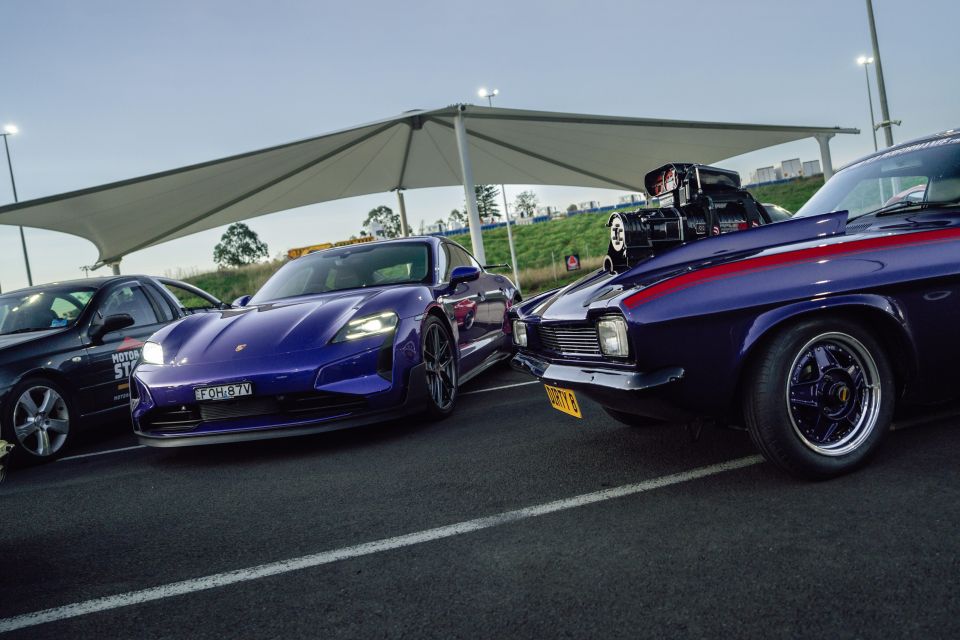
A whole lot of them are designed to go quick in a straight line – very quick.
However they’re usually not nice at stopping and turning.
This Taycan is nearly the other. It’s predominantly engineered for cornering excellence and to have the ability to lap a observe in ferocious type.
The Taycan Turbo GT additionally occurs to be ludicrously fast in a straight line.
However wait… haven’t we seen this earlier than?
After all, this isn’t the primary time a Porsche has pushed Aussie drag racing guidelines to their limits. Again in 2011, Motor Journal ran the same experiment with a 911 Turbo S – and it too ended up being banned.
They took what then set a brand new efficiency benchmark to the drags to attempt to get it banned – and likewise succeeded.
However the goalposts have been considerably wider again then.

Manufacturing vehicles solely needed to do higher than 11.0 seconds or exceed 140mph (225.3km/h) with the intention to get banned.
The 911 Turbo S nailed it, masking the space in 10.874 seconds at 209.50km/h.
On the time, Motor’s Shaun Cleary famous that it was the quickest acceleration numbers within the journal’s historical past.
And, sure, it was quick, though as CarExpert’s personal drag race collection reveals, issues have moved on.
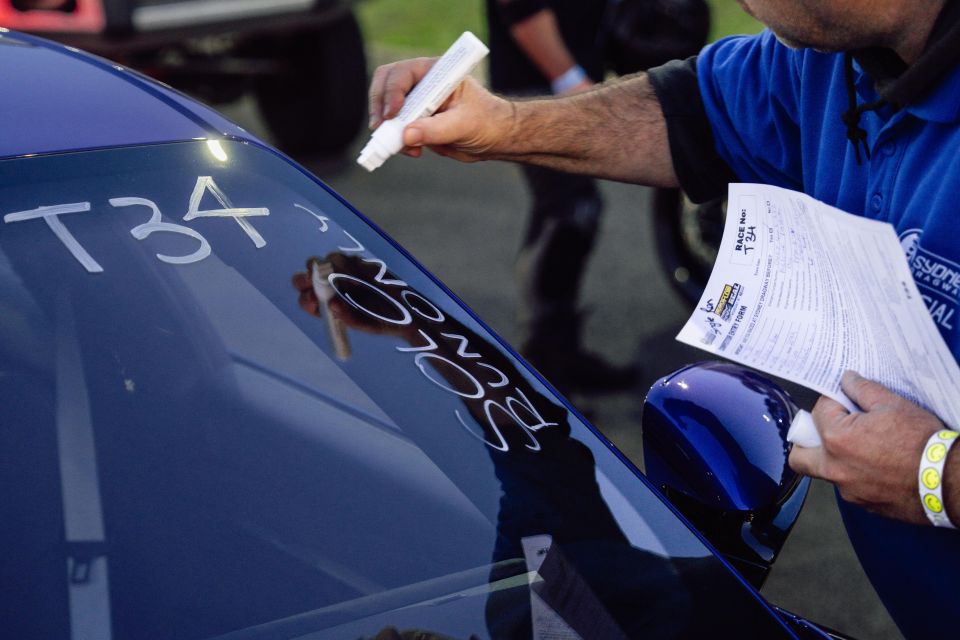
On a distant Western Australian runway Paul Maric and Alborz Fallah have run some significantly fast instances in some significantly slick equipment.
The Lamborghini Revuelto lately clocked a ten.18-second run at 228.53km/h. The mix of a V12 engine and three electrical motors provides as much as severe tempo.
Electrons solely
For us, there’s no petrol, with the Turbo GT – one thing of a efficiency automotive cut price at $419,000 plus on-road prices – as a substitute using a comparatively easy two-motor EV powertrain.
Okay, that’s simplifying issues barely.
They’re potent electrical motors and there’s some difficult stuff occurring in there with electrons. The heart beat inverter that provides electrical energy to the rear motor will get a brand new silicon carbide semiconductor materials. Which means it could provide extra present – extra electrical energy – to the motors, to create huge energy.
The GT’s uncooked numbers paint a sobering image.
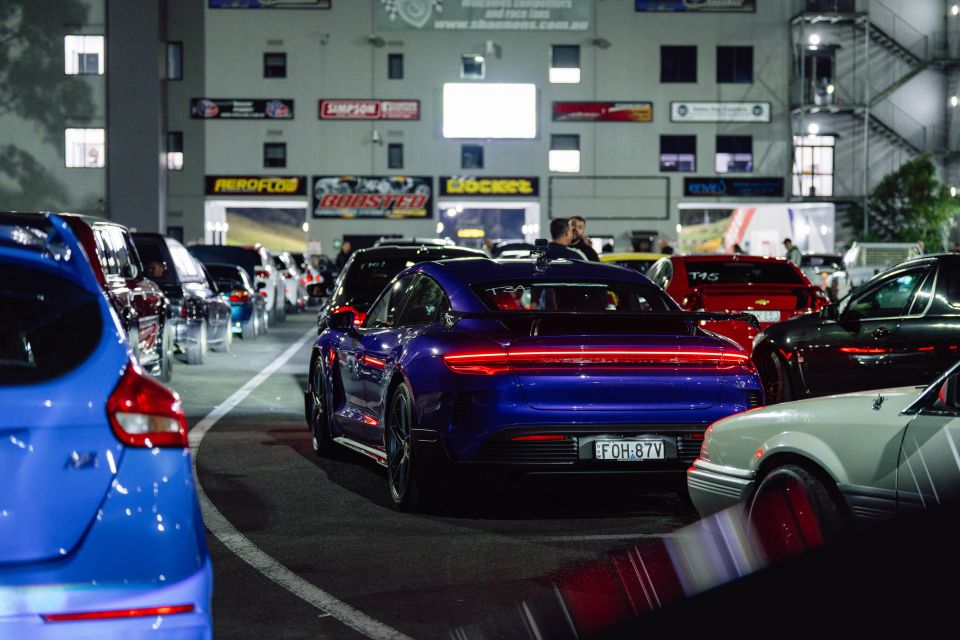
In overboost mode it could summon 760kW. A brand new Assault Mode dials that as much as 815kW in two-second bursts. That’s nearly 1100 horsepower – greater than an F1 automotive.
And it’ll thump out a constant 1240Nm, comfortably blitzing most supercars.
Positive, a nuggety physique quells these kiloWatts.
In Weissach guise as examined right here – no rear seats, no electrical seat adjustment and a complete lot much less sound deadening – the Turbo GT nonetheless ideas the scales at a really un-supercar-like 2220kg.
Lining up
Nonetheless, the ability numbers trounce the kilos.
It doesn’t take Oscar Piastri to get a Porsche Taycan off the road with ballistic intent.
The electrical hero of the German model’s lineup is as simple as any automotive to blast down a drag strip.

Choose Sport Plus, left foot on the brake and ground the throttle. Launch the brake and your head will quickly be mashed again into the top restraint.
In Turbo GT guise it’s probably the most ferocious of any Porsche. And as we quickly learnt, harnessing all 1240Nm is usually a problem, even when it’s channelled by means of sticky Pirelli P Zero tyres.
That is the place we fess up.

Our first run on the drags was on a cold winter night time. And the very best the automotive did was a 9.657-second run at 149.83mph (241.1km/h). That’s fast.
However it fell tantalising quick – simply 0.17mph – from hitting the 150mph goal and being banned.
Through the six runs the automotive by no means launched as onerous because it may. Wheelspin was a relentless companion, the traction management working tenaciously to stop a Pirelli smoke present.
It was a irritating consequence. We knew the automotive may go faster, however temperatures have been in opposition to us.
Staying heat
The massive difficulty was tyres. Or, extra particularly temperatures. A bit of warmth makes them stickier and improves grip.
However there was no method to heat them. A burnout isn’t doable in an all-wheel drive automotive.
And there’s no racetrack to zip round to get some warmth into the tyres.

Moreover, not like a combustion-powered automobile – through which it’s useful to have much less gasoline within the tank – with an EV you need as a lot cost as doable.
Blame it on batteries. When a battery loses cost its voltage drops barely.
How a lot energy an EV makes is set by its voltage multiplied by its present (measured in amps).
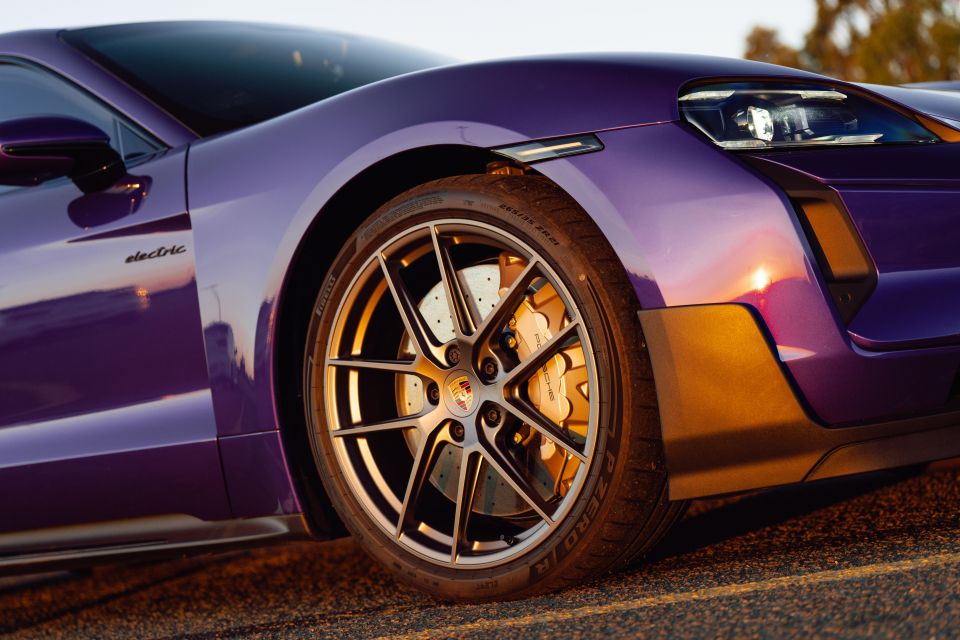
Engineers can counter the voltage drop by growing the present.
However, equally, many EVs – together with the Taycan – will make much less energy because the battery cost drops.
For this take a look at, Porsche engineers urged I maintain the battery topped method up (above 90 per cent state of cost).
There’s additionally one other temperature to handle right here: the battery.

Batteries don’t like being too chilly as a result of it slows down the chemical reactions and means ions transfer slower. I would like bazilliions of ions transferring in a short time.
Ideally, I need the Taycan’s battery pack above 30 levels.
With an ambient temperature round 4 levels, that creates challenges.
Take two
The primary objective of topping 150mph run was so shut we determined to strive once more. One other night time, simply as chilly.
One respectable launch early on night time two – when the observe was correctly prepped and the temperature barely hotter – and it ought to simply beat the goal.
However, once more, the monstrous torque mountain gained the traction argument.

After 4 runs we pulled the pin. It was constantly posting 9.6/9.7-second instances.
However it could simply as constantly wheelspin off the road. All of which is value placing in perspective.
These sub-10-second instances are faster than most supercars can produce, and properly into rarefied manufacturing automotive air on a drag strip.
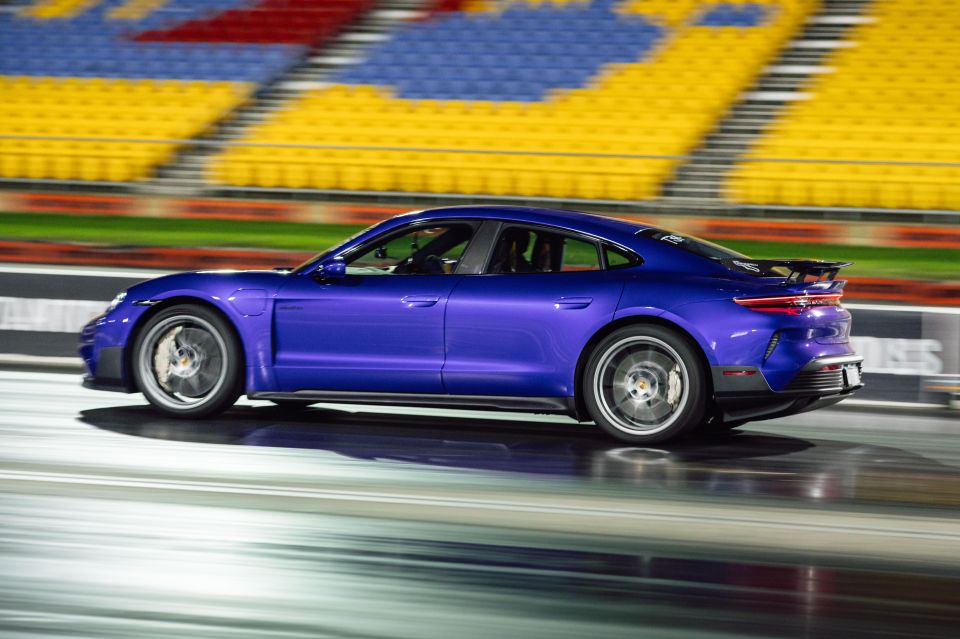
They’re the kind of instances that reinforce simply how blisteringly quick electrical Porsches will be.
However we by no means hit the objective: 150mph.
Again to the drafting board…
Third time fortunate…
It was clear tyre temperatures have been key to smashing the objective.
In the midst of winter the one factor I may consider have been tyre heaters.
Dozens of telephone calls later I discovered some – due to the group at DNA AutoSport Australia! – and we headed to Sydney Dragway for a 3rd time with our purple weapon.
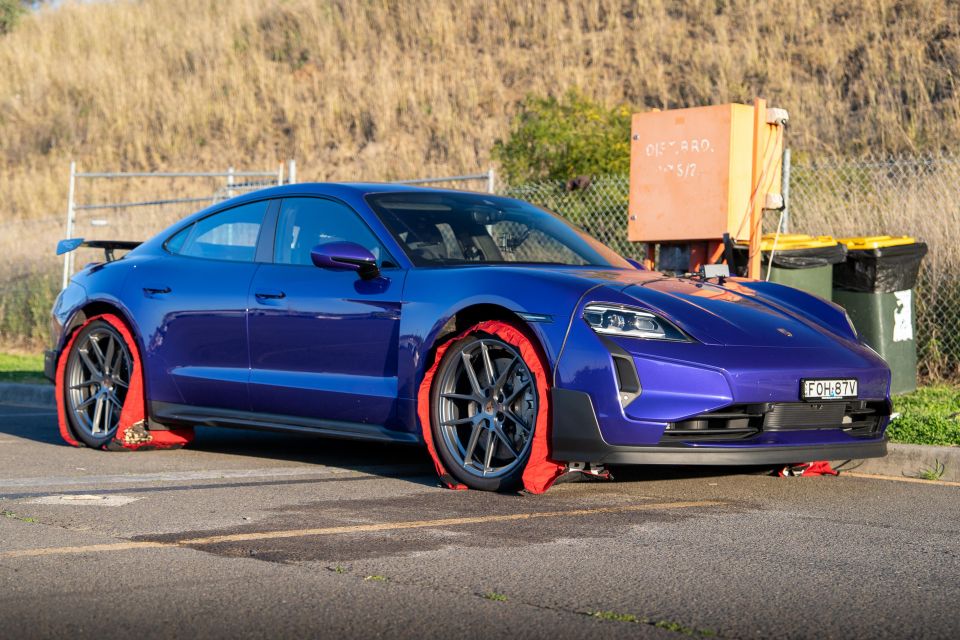
The tyre heaters rugged up the 21-inch Pirellis.
We additionally labored out a method to generate warmth within the battery. As soon as the battery was charged from an AC charger, we then inputted an area 350kW charger into the sat-nav.
The automotive instantly began heating the battery to organize to take the quick cost.

Doing that makes use of electrical energy, however because the battery approached 40 levels we unplugged to then shortly high up that misplaced quantity from the AC charger.
It’s a fragile temperature steadiness which when timed with the drag run is sufficient to get the guts thumping – all whereas stationary.
Then it was off to the beginning line.
A brand new document
This time round issues have been very completely different.
The tyres have been someplace approaching 40 levels, the battery temperature was rather less however nonetheless in its candy spot.
And because the drag race Christmas tree hit inexperienced, the Turbo GT leapt ahead with newfound ferocity.
There was not one of the chattering, not one of the slip, only a potent ahead power I’ve by no means skilled earlier than.
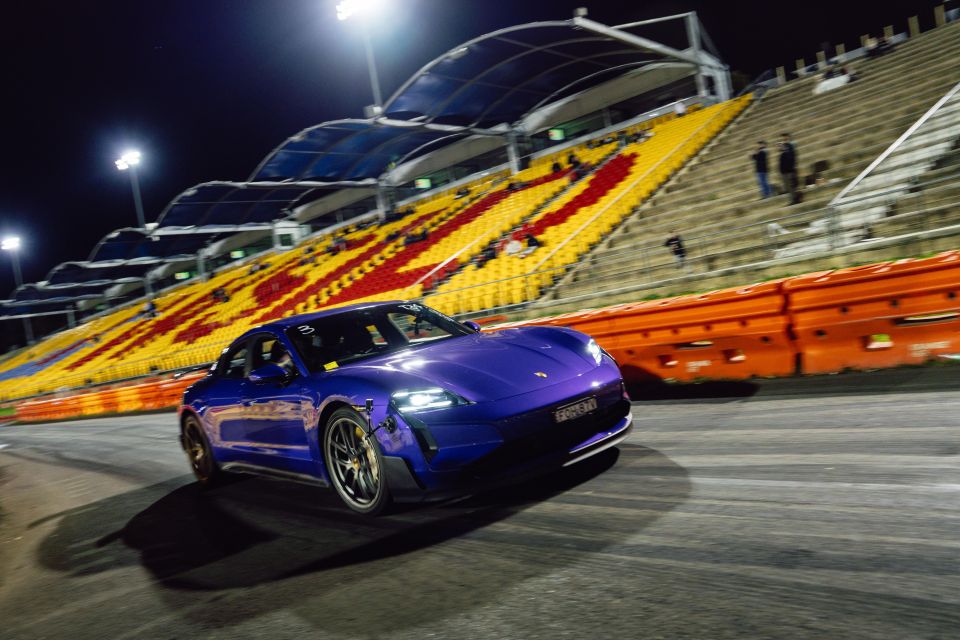
It’s the kind of mind-bending expertise that focuses your consideration.
Positive, you’re solely driving in a straight line, however there’s a lot occurring. Even by means of a helmet the wind noise shortly turns into an aircraft-like rush.
The digital speedo is biking by means of the numbers so quick it’s seemingly struggling to maintain up.
I later test the official documentation to get an thought of the acceleration.
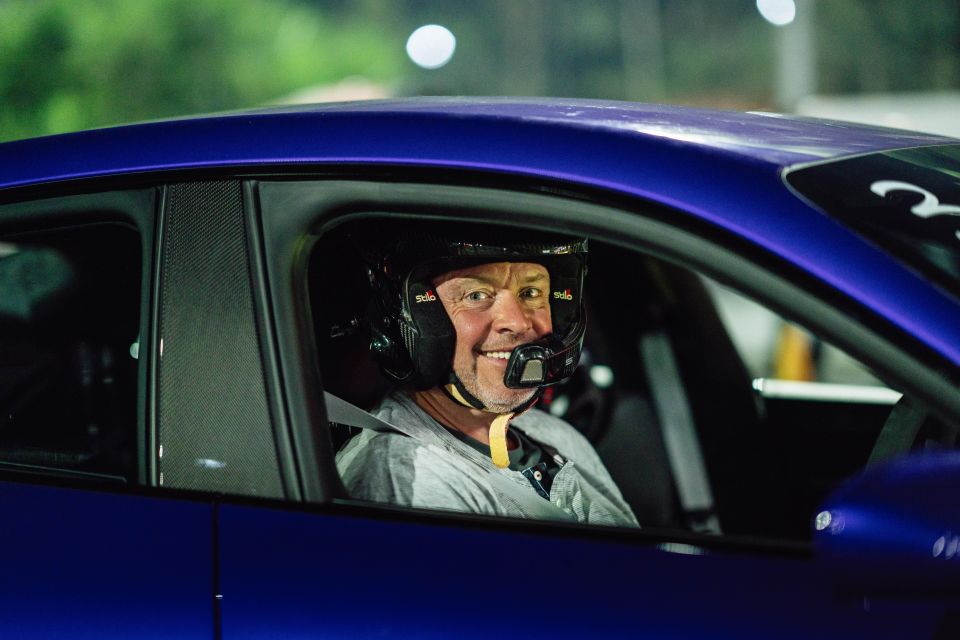
The journey to the eighth-mile level – half method down the drag strip – took simply 5.855 seconds. And the automotive was travelling 196.4km/h.
So the blast to 200km/h took about six seconds. An F1 automotive takes one thing like 5 seconds to hit the identical goal.
One other few seconds and it’s over. The run felt fast. It was.
And we’re banned…
Rolling again round previous the beginning line, I’m stopped by an official from the Worldwide Sizzling Rod Affiliation (IHRA), the physique that sanctions competitions at main drag races, together with these at Sydney Dragway.
“You’re going too quick,” he says.
“You want a parachute if you happen to’re doing over 150mph”.

Seems we went properly over that, clocking 156.61mph, or 252.04km/h. The elapsed time was 9.083 seconds.
That’s 10km/h quicker than the restrict for any automotive on an Aussie drag strip that doesn’t have a parachute.
I’d argue the Taycan has one thing much more efficient: 10-piston calipers grabbing 420mm carbon ceramic discs up entrance.
The automotive didn’t have the slightest difficulty slowing down. However I’m not about to argue that.

The one method we are able to proceed on the night time is by lifting our proper foot on the drag strip to make sure we don’t exceed the velocity restrict.
The place’s the enjoyable in that? Moreover, it’s objective achieved.
For now not less than, the Taycan Turbo GT is the quickest manufacturing automotive you should buy, bolt numberplates to, and blast down an Australian drag strip in.

